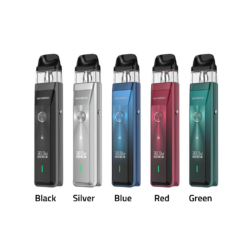Smoking remains a pervasive public health concern in South Africa, posing a significant challenge to the nation’s efforts to reduce the associated health risks and economic burdens. The high prevalence of smoking-related diseases and the formidable task of combating this addiction have prompted the exploration of alternative methods for smoking cessation. Among these alternatives, vaping has emerged as a controversial yet increasingly prominent tool in the arsenal of smoking cessation programs.
The Challenges Of Smoking Addiction In South Africa
Smoking addiction in South Africa is a multifaceted problem with widespread implications. The nation has one of the world’s highest smoking prevalence rates, leading to a substantial burden of tobacco-related diseases on the healthcare system. Treating conditions like lung cancer and COPD strains healthcare resources and affects service quality. The tobacco industry’s economic importance creates a complex dilemma for policymakers, balancing smoking reduction with potential economic consequences.
Smoking also disproportionately affects vulnerable populations and youth, aggravating existing health disparities. Aggressive tobacco industry marketing strategies, secondhand smoke exposure, and limited access to smoking cessation resources further compound the problem.
These challenges highlight the pressing need for a comprehensive approach to smoking addiction. Alternative strategies like vaping are gaining attention in South Africa’s smoking cessation efforts, making their role a subject of significant interest and debate.
Vaping As A Smoking Cessation Tool
Vaping has emerged as a potential smoking cessation tool with a distinct set of attributes. It has gained significant attention in recent years, both globally and in South Africa, as a harm reduction strategy and an alternative to traditional methods of quitting smoking.
Harm Reduction Approach
Vaping is often viewed within a harm reduction framework. Unlike traditional cigarettes, e-cigarettes do not involve the combustion of tobacco, which is responsible for producing the vast majority of harmful toxins found in tobacco smoke.
Nicotine Replacement
E-cigarettes can deliver nicotine to users in a manner that simulates the act of smoking. This aspect is crucial because nicotine is a highly addictive component of tobacco. Vaping allows smokers to receive their nicotine fix while potentially reducing exposure to harmful combustion byproducts.
Customisation And Gradual Reduction
Vaping devices come in various nicotine strengths, allowing users to tailor their nicotine intake. Smokers can start with a nicotine level similar to their smoking habit and then gradually reduce it over time, facilitating a stepwise reduction in nicotine dependence.
Behavioural And Psychological Factors
Vaping also addresses the behavioural and psychological aspects of smoking addiction. The hand-to-mouth action and the inhalation-exhalation process mimic the rituals of smoking, making it easier for individuals to transition away from traditional cigarettes.
Support And Community
Many smokers find support in vaping communities and online forums, where they can share experiences and success stories. This sense of community can be a valuable resource for those looking to quit smoking.
Accessibility And Convenience
Vaping products are widely accessible and available in various forms, from cig-a-likes to more advanced mods and pods. This range of options can cater to a broad spectrum of users, allowing them to choose the device that suits their preferences.
Vaping Vs. Traditional Smoking Cessation Methods
The comparison between vaping and traditional smoking cessation methods is a critical aspect of the ongoing debate surrounding the role of vaping in helping people quit smoking. Here, we elaborate on the key differences and considerations when evaluating these two approaches.
Harm Reduction Vs. Abstinence-Based Approach
Vaping: Vaping is often seen as a harm reduction approach, allowing individuals to continue receiving nicotine in a less harmful manner than smoking traditional cigarettes. It acknowledges that some smokers may struggle with complete abstinence and offers a less harmful alternative.
Traditional Methods: Conventional smoking cessation methods, such as nicotine replacement therapy (NRT) or prescription medications, typically advocate complete nicotine abstinence as the goal. They focus on breaking the physical and psychological addiction to nicotine altogether.
Nicotine Delivery
Vaping: E-cigarettes deliver nicotine in a way that simulates smoking, addressing both the physical and psychological aspects of addiction. Users can control the nicotine concentration, making it easier to gradually reduce nicotine intake over time.
Traditional Methods: NRT and prescription medications provide controlled doses of nicotine to reduce withdrawal symptoms but do not offer the same smoking-like ritual. These methods aim to wean individuals off nicotine gradually.
Effectiveness
Vaping: Research on the effectiveness of vaping as a smoking cessation tool is ongoing and mixed. Countless studies suggest that vaping can be more effective than traditional NRT methods.
Traditional Methods: Traditional smoking cessation methods like NRT and prescription medications have a longer track record and established efficacy in helping smokers quit. They have been widely used in clinical settings and are recommended by healthcare professionals.
Safety And Health Concerns
Vaping: The long-term health effects of vaping are still not fully understood, and there are concerns about the inhalation of potentially harmful chemicals and substances in e-cigarette aerosols. However, this is generally only associated with counterfeit vaping products and it is generally agreed that vaping is less harmful than smoking traditional cigarettes.
Traditional Methods: Conventional cessation methods like NRT and prescription medications have a well-documented safety profile and are approved by regulatory agencies. They do not involve inhaling potentially harmful aerosols.
Accessibility And User Experience
Vaping: Vaping products are widely available and come in various forms, allowing users to choose devices and flavours that suit their preferences. The experience closely mimics smoking, making it appealing to many smokers.
Traditional Methods: NRT products are available over the counter, and prescription medications are obtained through healthcare providers. While they are accessible, they may not provide the same sensory and behavioural experience as smoking or vaping.
The role of vaping in smoking cessation programs in South Africa is a topic of ongoing debate and exploration, driven by the urgent need to address high smoking prevalence and its associated health and economic burdens. Vaping offers a unique approach to quitting smoking, characterised by harm reduction, behavioural and psychological support, and customisation of nicotine intake.
Vaping’s potential as a harm reduction tool is evident, offering a safer alternative for those unable or unwilling to quit nicotine use entirely. The ability to gradually reduce nicotine levels and simulate the rituals of smoking can be invaluable for certain individuals on their journey to quitting.
-
Vaporesso Luxe XR MAX Pod MOD
R820.00 -
SMOK Novo 5 Kit
R520.00Original price was: R520.00.R440.00Current price is: R440.00. -
Uwell Caliburn G3 Pod System
R540.00Original price was: R540.00.R425.00Current price is: R425.00. -
Vaporesso XROS PRO Kit
R650.00










